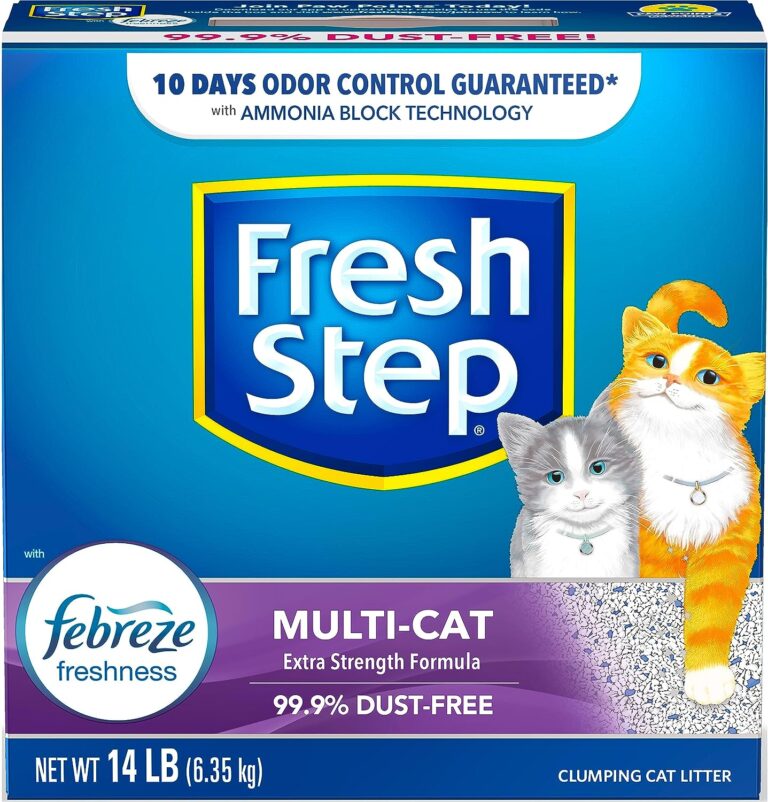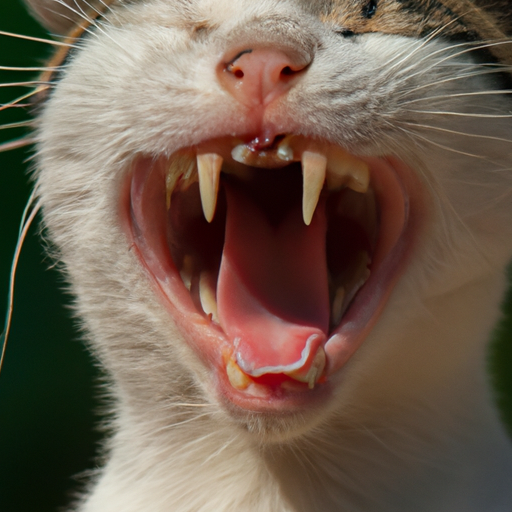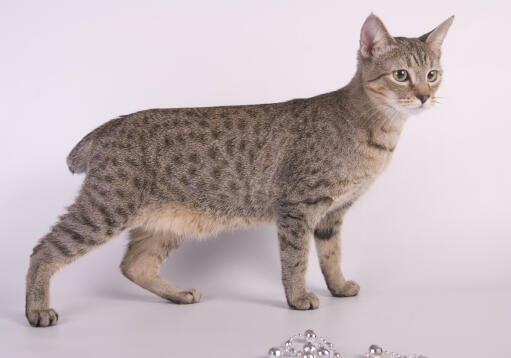What Can Cats Eat?
Fantastic, you’re interested in “What Can Cats Eat“! This is an expert guide that focuses on the dietary habits of your lovely feline friends. Unlock the secrets of their nutritional requirements, and learn exactly what foods are safe, beneficial, and even vital, for their overall well-being. It is a must-read that is loaded with important information for every cat parent, whether you’re a novice or a seasoned cat caregiver. “What Can Cats Eat” is the key to nurturing a healthy and happy feline companion.
Understanding Feline Dietary Needs
You might not know it, but cats have very specific dietary needs that differ quite a bit from ours. It’s not always about just finding a good cat food brand and calling it a day. Let’s delve into what they really need.
Importance of Protein
Cats are what you call obligate carnivores. This essentially means they absolutely need meat to survive. Protein is an essential part of your cat’s diet, providing them with the energy they need to stay active and healthy. So when you’re choosing cat food, it’s crucial to select a product rich in high-quality animal proteins.
Essential Vitamins and Minerals
Just like us, cats also require vitamins and minerals to stay healthy. They need a balanced intake of nutrients like calcium, magnesium, potassium, and iron. They also require certain vitamins like Vitamin A, B vitamins, Vitamin D, and Vitamin E. You can usually rely on a high-quality commercial cat food to meet these requirements.
Importance of Hydration
Hydration is key, too. Cats don’t drink as much water as dogs, which makes their hydration really crucial. Some even prefer running water and aren’t as inclined to drink from a stagnant water bowl. Wet cat food is one great way to ensure they get sufficient water in their diet.
Foods to Avoid
While cats are known for their curious and exploratory behaviour, it’s essential to make sure they avoid certain foods. Some food items like chocolate, onions, garlic, alcohol, tea, coffee, and certain types of fish and bones are harmful to cats and can cause severe health problems.
Safe Human Foods for Cats
While you should mainly feed your cat specially formulated cat food, certain human foods are safer for them to eat than others.
Cooked Meat and Fish
Cooked meat and fish are high in protein, making them good for your cat. However, they should always be cooked, as raw or undercooked meats can carry harmful bacteria.
Eggs
Eggs are safe for cats and contain proteins and vitamins which are beneficial for them. Remember to always cook the eggs as raw eggs may contain bacteria.
Certain Vegetables and Fruits
Some cats may enjoy the occasional vegetable or fruit, such as cooked green beans, carrots, or cantaloupe. Yet, keep in mind that not all fruits and vegetables are safe for cats, so always do your research first.
Whole Grains
Whole grains like oats and brown rice can be a healthy choice for your cat in moderate amounts, as they provide fibre and energy.
Brown Rice
Cooked brown rice can be a good source of carbohydrates for cats. It’s also great for maintaining a healthy weight and can often be found in commercial cat foods.
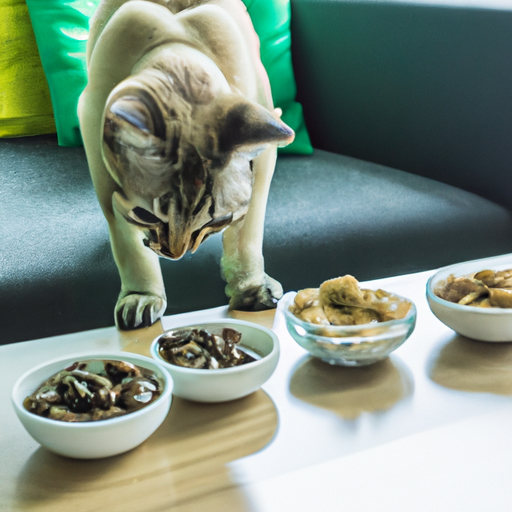
Potential Health Hazards of Human Food
While some human foods are safe for cats, others can pose serious health risks.
Onions, Garlic and Chives
All members of the onion family can be harmful to cats, causing red blood cell damage.
Sugar, Salt and Fat
High amounts of sugar, salt, and fat can lead to obesity, diabetes, and heart problems in your cat. Avoid any food with these ingredients in high proportions.
Caffeine and Alcohol
Caffeine and alcohol are dangerous for cats, leading to rapid breathing, heart palpitations, and even death.
Raisins and Grapes
While some fruits can be beneficial, raisins and grapes are toxic to cats and can cause kidney failure.
Chocolate and Dairy Products
Many people assume dairy is good for cats, but most adult cats are lactose intolerant. This means their bodies don’t produce enough of the enzyme lactase to break down lactose. Chocolate, on the other hand, contains theobromine, which can be fatal to your cat.
Feeding Dry vs. Wet Cat Food
It can be difficult to decide whether to feed your cat wet or dry food, so let’s consider the pros and cons of both.
Pros and Cons of Dry Cat Food
The benefits of dry cat food are that it’s easy to store and measure, it’s generally cheaper, and it can help to keep your cat’s teeth clean by reducing plaque build-up. However, it’s lower in moisture than wet food which could affect cats not taking enough water.
Pros and Cons of Wet Cat Food
Wet cat food has high water content which can help with hydration, and it’s often more palatable and contains fewer carbohydrates than dry food. The downside is that it has to be refrigerated once opened, and it can be more costly.
Balancing Both
An effective approach may be to balance both dry and wet food in your cat’s diet.
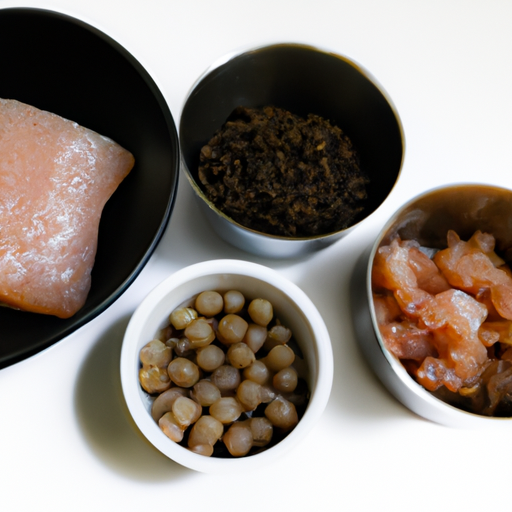
Cats and Raw Food Diet
A raw food diet for cats is often believed to be a more natural and healthy option, but it’s not without its risks.
Benefits and Risks
A raw food diet can improve digestion, provide enhanced nutrients, and satisfy cats’ inherent carnivorous behavior. However, risks include potential nutrition imbalance and heightened exposure to bacteria in uncooked meat.
Preparing Raw Food at Home
If you prepare raw food for your cat at home, ensure that it’s balanced and provides all necessary nutrients. Raw meat should always be fresh and of high quality.
Commercially Available Raw Cat Food
There are commercially available raw cat food options if preparing at home sounds too daunting. Always choose one that’s nutritionally balanced.
Amount and Frequency of Feeding
Just as the type of food is important, so is the amount and frequency of feeding.
Feeding Kittens
Young kittens require more frequent meals and more calories since they’re in their growth phase.
Feeding Adult Cats
Adult cats do not require as many calories as kittens and they can be fed a couple of times a day.
Feeding Senior Cats
Older cats may need a diet lower in calories but higher in fiber, with increased protein.
Overfeeding and Underfeeding Concerns
Both overfeeding and underfeeding cause health issues, so stick to feeding guidelines and monitor your cat’s weight regularly.
Commercial Cat Food Options
If you’re opting for commercial cat food, it’s crucial to understand their labels and ingredients.
Understanding Cat Food Labels
The name of a cat food product often indicates its quality. For example, if a label reads “chicken cat food”, it means it contains at least 95% chicken.
Decoding Cat Food Ingredients
Ingredients are listed in order of their weight in the product. The first ingredient should always be a high-quality source of animal protein.
Choosing High-Quality Cat Food
Choose a cat food that is high in animal protein, low in carbohydrates, and has no fillers or artificial ingredients.
Special Dietary Considerations
Certain conditions require special dietary considerations.
Cats with Dietary Intolerances and Allergies
Cats with these conditions often need special hypoallergenic diets.
Dietary Needs of Pregnant and Nursing Cats
They may require extra calories and nutrients to support their bodies and their kittens.
Diet for Cats with Diabetes
Cats with diabetes often need a special diet that’s low in carbohydrates and high in protein.
Diet for Overweight Cats
Overweight cats may be recommended a low-calorie diet by the vet to help lose weight safely.
Cat Treats and Supplements
While cat treats and supplements can be beneficial, they should be used with caution.
Healthy Treat Options
Choose treats that are low in calories and have a high protein content.
The Role of Cat Food Supplements
Supplements are not usually required for healthy cats eating a balanced diet, but for cats with health conditions, they may be recommended by the vet.
Potential Risks of Treats and Supplements
Excessive treats can lead to obesity, and unnecessary supplements can actually unbalance your cat’s nutrition.
Essential Tips to Transition Cats to New Foods
Changing your cat’s diet isn’t always straightforward.
Gradual Food Changes
Introduce new foods gradually by mixing it with their current food and slowly increasing the amount.
Monitoring Your Cat’s Response
Watch for any changes in your cat’s behavior, appetite, or health, as these could signal a problem with the new food.
Consulting a Veterinarian
Always consult with a vet before making substantial changes to your cat’s diet or if your cat exhibits any adverse reactions to new foods.
By understanding your cat’s dietary needs and making informed choices, you can ensure that your furry friend stays healthy and happy.


